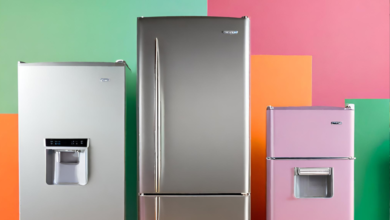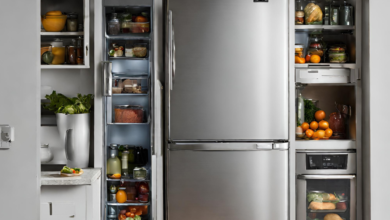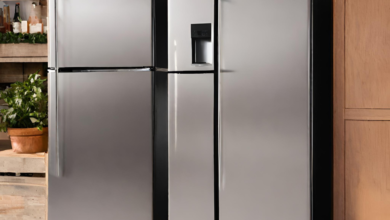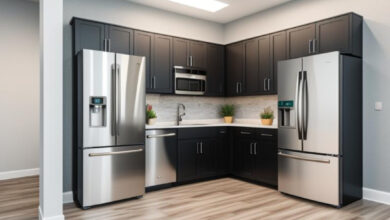Maximizing the Lifespan of Your Fridge with These Tips
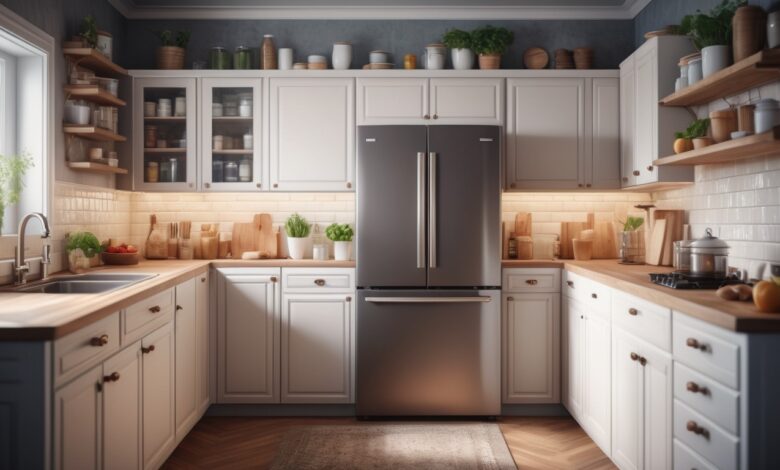
Our refrigerators are unsung heroes in our kitchens, diligently working to preserve our food and keep it fresh. However, like any household appliance, refrigerators have a finite lifespan. With proper care and maintenance, you can extend the life of your fridge, ensuring it remains efficient and reliable for years to come. In this comprehensive guide, we explore a multitude of tips and strategies to maximize the lifespan of your refrigerator.
I. Understanding the Lifespan of a Refrigerator
A. Average Lifespan
Refrigerators typically have an average lifespan of 10 to 20 years, depending on factors such as brand, model, usage patterns, and maintenance. Understanding this timeframe helps set realistic expectations and encourages proactive measures to ensure your fridge operates optimally throughout its life.
B. Signs of Aging
Recognizing the signs of an aging refrigerator is crucial. These signs may include increased energy consumption, inconsistent cooling, unusual noises, or visible wear and tear. Identifying these indicators early allows you to address issues promptly and potentially extend the lifespan of your appliance.
II. Optimal Placement and Ventilation
A. Proper Ventilation
Ensure that your refrigerator is positioned with ample space around it for proper ventilation. Refrigerators dissipate heat through coils located at the back or underneath. Adequate airflow prevents overheating, reducing the workload on the compressor and prolonging its life.
B. Temperature Considerations
Maintain an ambient temperature around the refrigerator. Placing it near heat sources, such as ovens or direct sunlight, can force the compressor to work harder. Strive to keep the ambient temperature in the recommended range, usually around 70 degrees Fahrenheit, for optimal performance.
III. Temperature Settings and Regulation
A. Optimal Refrigerator Temperature
Set your refrigerator’s temperature to the manufacturer’s recommended setting, usually between 37 to 40 degrees Fahrenheit. This temperature range ensures that perishable items stay fresh while minimizing the workload on the compressor.
B. Freezer Temperature Control
Similarly, regulate the freezer temperature within the recommended range of 0 to -5 degrees Fahrenheit. Proper freezer temperature not only preserves frozen food but also contributes to overall energy efficiency.
IV. Smart Energy Management
A. Energy-Efficient Models
Consider investing in an energy-efficient refrigerator. Energy Star-certified models adhere to stringent energy efficiency standards, consuming less power and potentially extending the lifespan of the appliance. These models often incorporate advanced technologies to optimize cooling and reduce environmental impact.
B. Scheduled Maintenance
Regularly clean the condenser coils, located either at the back or underneath the refrigerator. Dust and debris accumulation on these coils force the compressor to work harder, leading to increased energy consumption. A vacuum cleaner or a coil brush can be used for effective cleaning.
V. Organized Storage Practices
A. Proper Food Storage
Organize the contents of your refrigerator to ensure optimal airflow. Avoid overcrowding shelves, as this can obstruct air circulation and lead to uneven cooling. Additionally, proper food placement helps maintain consistent temperatures, reducing the strain on the cooling system.
B. Regular Defrosting
If your refrigerator has a manual defrost feature, make sure to defrost the freezer regularly. Excessive ice buildup forces the compressor to work harder, decreasing energy efficiency and potentially shortening the lifespan of the appliance.
VI. Efficient Use of Refrigerator Features
A. Avoid Overloading the Door
Refrain from overloading the refrigerator door with heavy items. Over time, excessive weight can strain the hinges and affect the door’s alignment, leading to inefficient sealing. A properly sealed door is essential for maintaining consistent temperatures and prolonging the life of the appliance.
B. Smart Thermostats and Controls
If your refrigerator features smart thermostats or controls, make the most of these advanced settings. Some models allow you to adjust temperature settings based on usage patterns, optimizing energy consumption and extending the overall lifespan of the appliance.
VII. Regular Cleaning and Maintenance
A. Interior Cleaning
Regularly clean the interior of the refrigerator, including shelves, drawers, and door seals. Spills and food residues not only affect the freshness of your food but can also lead to the growth of mold and bacteria, impacting the overall hygiene of the appliance.
B. Door Seal Inspection
Inspect the door seals, also known as gaskets, for any signs of wear or damage. Damaged seals allow cold air to escape, forcing the compressor to work harder to maintain the set temperatures. Replace worn-out seals promptly to ensure efficient cooling.
C. Check and Replace Water Filters
If your refrigerator has a water dispenser or an ice maker, regularly check and replace the water filters as recommended by the manufacturer. Clogged filters can impede water flow, affecting ice production and potentially straining the appliance.
VIII. Addressing Common Issues Promptly
A. Unusual Noises
If your refrigerator starts making unusual noises, such as buzzing, rattling, or clicking, it’s crucial to investigate and address the issue promptly. Unusual sounds can indicate problems with the compressor, fans, or other internal components. Early intervention can prevent further damage and extend the lifespan of the appliance.
B. Leaks and Water Accumulation
Address any leaks or water accumulation inside the refrigerator promptly. Water-related issues can damage internal components and compromise the efficiency of the appliance. Regularly check the drip pan, drain lines, and water dispenser for any signs of leaks.
IX. Professional Maintenance and Repairs
A. Scheduled Professional Maintenance
Consider scheduling professional maintenance for your refrigerator at regular intervals. Professional technicians can inspect internal components, check for refrigerant leaks, and ensure that the appliance is operating at peak efficiency. Regular maintenance can catch potential issues before they escalate.
B. Prompt Repairs
If you notice any significant issues with your refrigerator, such as inconsistent cooling or persistent problems, it’s advisable to seek professional repairs promptly. Delaying repairs can exacerbate problems and lead to more extensive and costly issues down the line.
X. Upgrading to a New Model
A. Signs of Irreparable Damage
Despite diligent care and maintenance, there may come a time when your refrigerator shows signs of irreparable damage or becomes increasingly inefficient. In such cases, upgrading to a new, energy-efficient model may be a practical and cost-effective decision in the long run.
B. Energy Star-Certified Replacements
When considering a new refrigerator, opt for Energy Star-certified models. These appliances adhere to stringent energy efficiency standards and often come equipped with advanced features to enhance performance and longevity.
XI. Conclusion
In conclusion, maximizing the lifespan of your refrigerator requires a combination of proactive maintenance, efficient usage practices, and timely repairs. By understanding the intricacies of your appliance, implementing smart energy management strategies, and addressing issues promptly, you can ensure that your refrigerator remains a reliable and efficient kitchen companion for years to come. Remember, a well-maintained refrigerator not only preserves your food but also contributes to energy conservation and cost savings in the long term. Embrace these tips, and you’ll be on your way to getting the most out of your refrigerator investment.
